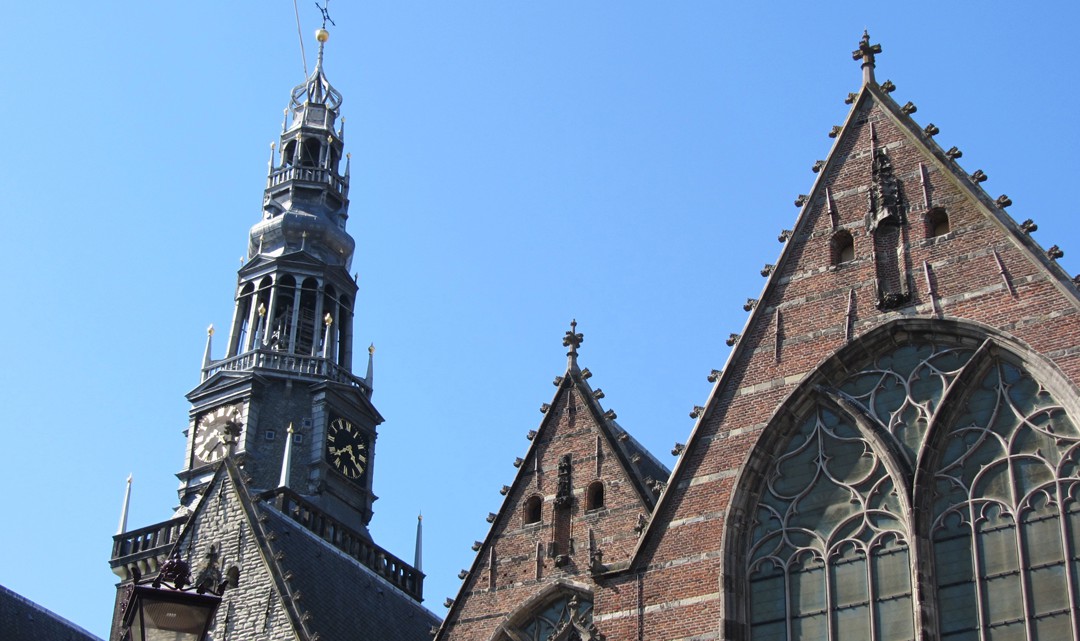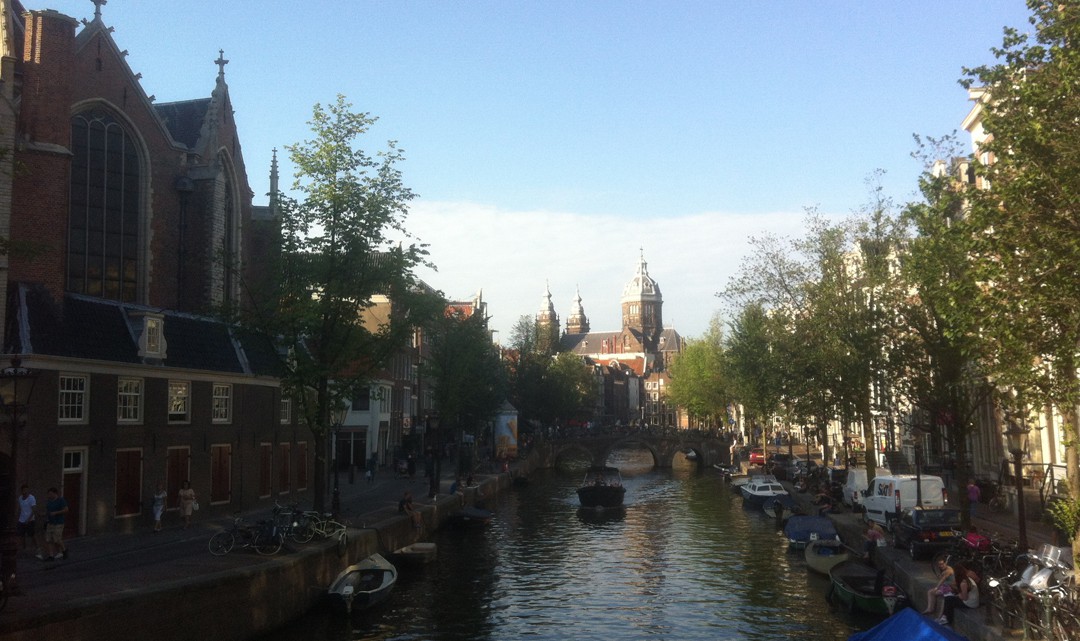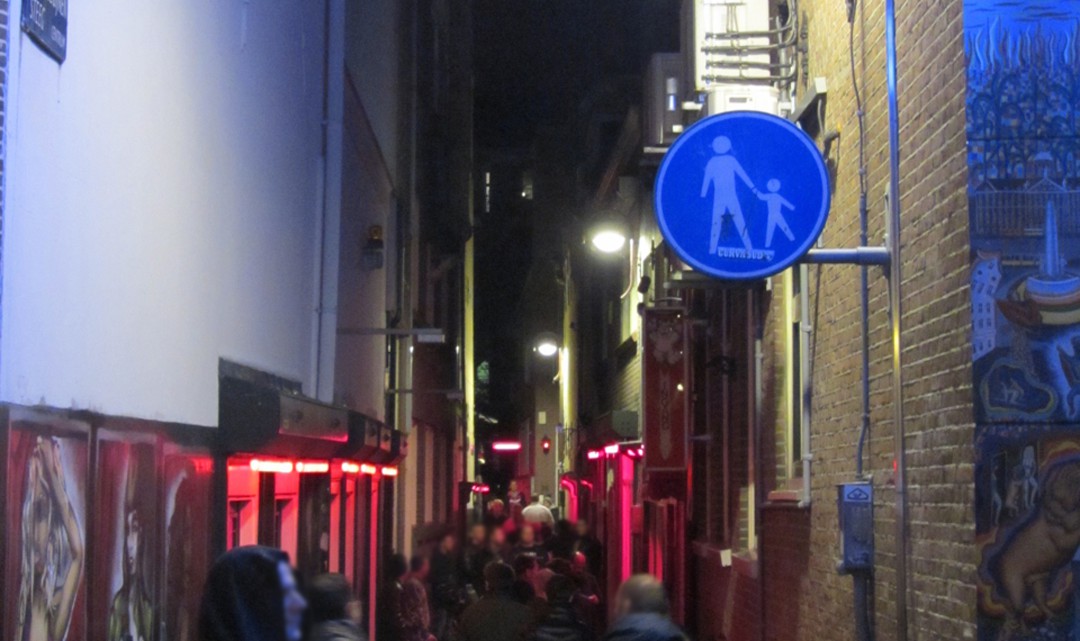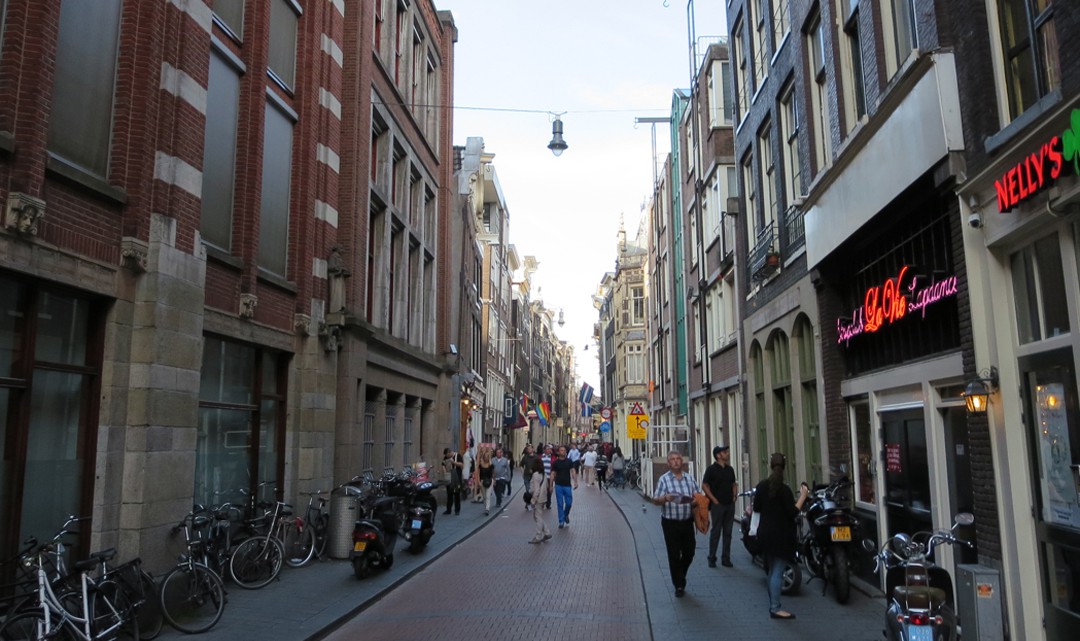Description
Amongst the ‘Amsterdammers’ the area around the Warmoesstraat, Zeedijk and Red Light District, is better known as ‘De Wallen’ (The Ramparts). This is the oldest part of Amsterdam and originated in 1385. Several ramparts where built along the various canals and the river Amstel; hence the name De Wallen. This area started as an area of vegetable gardens and the textile industry. And although the growth and prosperity of Amsterdam has always attracted prostitution, the Red Light District only became what it is now, in the early 1900’s.
The neighbourhood
The Red Light District is famous – or infamous, so you like – around the world. As mentioned, the Red Light District is the area between the Warmoesstraat and Zeedijk, bordered in the southwest by the Oude Hoogstraat. This district – where you will find ‘window prostitution’ – is the embodiment of the Dutch liberal views on some issues that are a big taboo in (many) other countries. Prostitution in the Netherlands is legal and it is okay – but not legal! – to smoke a joint on the streets (the government still has a tolerance policy towards soft drugs). The Red Light District definitely has its unique atmosphere, best felt in the evening and at night, when the area is busier than during the day.
Highlights in the Red Light District
My conscious is in conflict, whether to advise you to go to this area for the before mentioned aspects of the area. On one hand it really is a unique experience and so very much Amsterdam, that I think you should have seen it at least once. On the other hand, there still is a lot of criminal activities surrounding prostitution and soft drugs. The area however, has lots more to offer than just the red lighted windows and coffee shops. In this oldest neighbourhood of Amsterdam, you will find the Oude Kerk (Old Church) for instance. The Oude Kerk is the oldest building in Amsterdam, dating back to the 14th century (1306 to be precise). The church is now mostly used for exhibitions, concerts, debates and other cultural activities.
Another highlight is Ons’ Lieve Heer op Solder (Our Lord in the Attic). In a 17th century canal house, you will find one of the oldest museums of Amsterdam. In the attic of three adjacent houses you can admire a hidden church from the time of the reformation (start in 1578), when it was forbidden to organise public Catholic church services.
Besides these two highlights, there is a lot more to do in this neighbourhood. Our favourite restaurant, Anna, can be found here and also places like, brewery De Prael, distillery Wynand Fockink, Condomerie and Metropolitan Chocolate.














No Comment